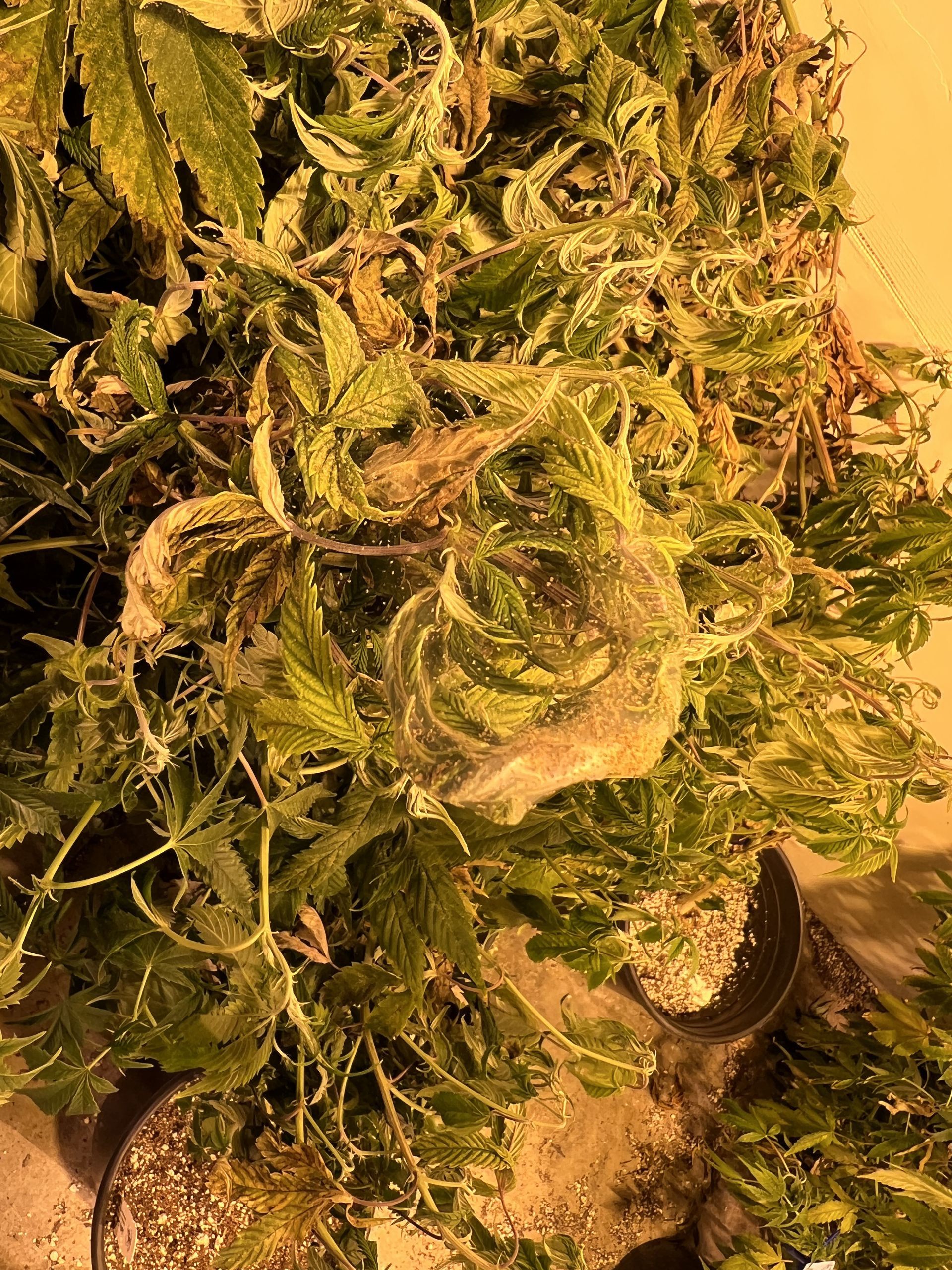The Changing landscape of Commercial Cannabis in Oregon
Bradley McElrath • July 10, 2024
The Changing Landscape of Commercial Cannabis In Oregon

Introduction
Hey there! If you've been following the cannabis scene in Oregon, you know it's been a wild ride since recreational cannabis got the green light back in 2014. From shifting regulations to market ups and downs, the industry has seen it all. Let's dive into how things have changed, the impact of federal hemp legalization, the introduction of the Metrc tracking system, and how prices have fluctuated over the years.
From OHA to OLCC
When Oregon first legalized medical cannabis in 1998, the Oregon Health Authority (OHA) was in charge. But things got a bit more complicated when recreational cannabis was legalized in 2014. To streamline things, the Oregon Liquor Control Commission (OLCC)—now known as the Oregon Liquor and Cannabis Commission—took over the reins for recreational cannabis. This move was all about making the regulatory framework more efficient and keeping a closer eye on the growing market.The OLCC's job is pretty extensive. They license everyone from growers to retailers and even testing labs. Plus, they track cannabis from seed to sale to make sure everything stays above board and out of the black market.
The Hemp Boom
Remember the 2018 Farm Bill? It was a game-changer because it made hemp legal at the federal level. Hemp is basically cannabis with less than 0.3% THC, so it doesn't get you high. This legalization opened the floodgates for hemp-derived CBD products, adding a whole new layer of competition to the cannabis market.But it's not all smooth sailing. The line between hemp and marijuana can get blurry, especially with products like Delta-8 THC popping up. These products often dodge the strict regulations and taxes that marijuana faces, creating some headaches for the industry.
Metrc: The Cannabis Tracking System
To tackle black market issues and keep things legit, Oregon rolled out the Metrc Cannabis Tracking System in 2017. Metrc stands for Marijuana Enforcement Tracking Reporting Compliance, and it's all about tracking cannabis from the moment it's planted to the time it's sold.Every licensed cannabis business in Oregon has to use Metrc. They tag each plant and product with unique identifiers, making it easy for regulators to track their journey through the supply chain. This system helps keep everything transparent and ensures that products are safe and taxes are paid.
Market Trends and Price Drops
The cannabis market in Oregon has been a bit of a rollercoaster. After recreational cannabis was legalized, the market exploded, hitting over $1 billion in sales for the first time in 2020. But with rapid growth came some challenges, like oversupply and falling prices.Over the past nine years, the price per pound of cannabis in Oregon has seen a steady decline. Back in 2015, a pound of cannabis could fetch around $2,500. Fast forward to 2016, and the price dropped to about $2,000. By 2017, it was down to $1,500, and it kept falling—$1,200 in 2018, $1,000 in 2019, $800 in 2020, $700 in 2021, $650 in 2022, $600 in 2023, and now, in 2024, it's around $550 per pound.Why the drop? Well, the state issued more producer licenses than retail licenses, flooding the market with more cannabis than it could handle. This oversupply has made it tough for both producers and retailers to stay profitable.
The Impact of Oversupply
The oversupply issue is a significant challenge for Oregon's cannabis industry. In 2023, Oregon farmers harvested a staggering 9.6 million pounds of marijuana, but sales have been on a downward trend since peaking during the pandemic. This glut of cannabis has led to a persistent oversupply, driving prices down and making it difficult for businesses to turn a profit. The unrestricted licensing system in Oregon has allowed too many players into the market, resulting in an excessive canopy size that surpasses both legal and illicit market demands. This surplus has forced cultivators to slash prices to secure dispensary placements, exacerbating revenue woes for both growers and retailers.
Legislative Responses
Despite advocacy efforts by trade associations for license limitations, the repercussions of oversupply persist. Balancing supply and demand hinges on a protracted process of capacity reduction. Industry leaders have been calling for permanent restrictions on the number of new marijuana businesses to prevent further market saturation.Since June 2018, a series of legislative and informal moratoriums have stopped additional licensure. However, the current moratorium is set to expire soon, and if it does, the OLCC will have to start processing applications again. This could worsen the oversupply problem unless state lawmakers take action to limit new licenses.
Challenges for Growers and Distributors
The oversupply issue isn't just a local problem; it's affecting the industry nationwide. Outstanding payments exceeding $3.8 billion plague the industry, with retailers defaulting on vendor payments. Simultaneously, retailers grapple with exorbitant federal tax rates, peaking at 70% in certain cases.The mounting payment arrears are pushing businesses into tax delinquency, imperiling license renewals. Bankruptcy protection eludes cannabis businesses, amplifying the risk of personal financial ruin. Forecasts point towards industry consolidation and an upsurge in business exits.
The Role of Federal Legalization
Many in the industry are pinning their hopes on potential federal legalization to enable interstate cannabis trade. This could boost sales, stabilize the market, and alleviate banking constraints. Despite mounting public support for legalizing marijuana, federal legalization remains stagnant in Congress.The marijuana industry has long hoped that federal legalization, or some half-step that allowed cannabis to be sold across state lines, could create a national market for Oregon’s crop. But while individual states continue to move toward legalizing marijuana, changes on the national level appear unlikely anytime soon given the intense partisan divide in Congress.
The Consumer Perspective
While the oversupply and price drops have been tough on businesses, consumers have benefited from lower prices. For 11 consecutive months, prices have remained under $4 a gram, making cannabis more affordable for users. However, this price depression has contributed to the financial struggles of many cannabis businesses.
Tax Revenue and Public Health
The decline in cannabis prices and sales has also impacted tax revenue. State economists expect $311 million in marijuana tax revenue during the current two-year budget cycle, down $7 million from their last forecast. Most of the tax money goes to drug treatment, with smaller amounts going to schools, police, and local governments.The shortfall in tax revenue not only jeopardizes the industry but also endangers public health initiatives reliant on such funds. The cannabis industry’s struggles have led to it topping the list of delinquent taxpayers released by the Oregon Department of Revenue last year.
The Future of Oregon's Cannabis Industry
The future of Oregon's cannabis industry remains uncertain. The market continues to grapple with challenges such as oversupply, price compression, and regulatory hurdles. However, there are also opportunities for growth and innovation.As the industry matures, it is crucial for stakeholders to adapt to these evolving conditions and explore innovative strategies to sustain growth and profitability. This could include diversifying product offerings, improving operational efficiencies, and advocating for regulatory changes that support a more balanced market.
Conclusion
So, there you have it. The commercial cannabis landscape in Oregon has seen some serious changes since recreational cannabis was legalized. The shift from OHA to OLCC centralized regulation, federal hemp legalization shook things up, and the Metrc system brought much-needed transparency. Despite these advancements, the market still faces challenges like oversupply and price drops.As the industry continues to evolve, it's crucial for everyone involved to stay adaptable and innovative. Oregon's journey offers valuable lessons for other states and countries looking to legalize and regulate cannabis. Thanks for sticking with us through this deep dive into Oregon's cannabis scene!
Final Thoughts
The cannabis industry in Oregon is a testament to the complexities and challenges of regulating a newly legalized market. While there have been significant achievements, the road ahead is fraught with obstacles that require careful navigation. By learning from Oregon's experiences, other states can better prepare for the challenges and opportunities that come with cannabis legalization.Whether you're a grower, retailer, or consumer, staying informed and engaged with the industry's developments is key to thriving in this ever-changing landscape. As we look to the future, the hope is that with continued innovation and adaptation, the cannabis industry in Oregon and beyond will find a sustainable path forward.
Terra Vita Holdings: Leading the Way
At Terra Vita Holdings, we understand the intricacies of Oregon's cannabis market better than anyone. Our mission is to help cannabis businesses navigate these challenges and find sustainable success. With over a decade of experience, we have seen firsthand how the market has evolved and adapted to new regulations and market conditions.
Terra Vita Holdings is committed to providing comprehensive consulting services that ensure compliance, enhance productivity, and drive profitability. We specialize in creating tailored onboarding and training programs for both startups and established businesses, ensuring they excel in their operations and achieve sustainable growth.
As the market continues to evolve, Terra Vita Holdings remains at the forefront, helping businesses adapt and thrive in this dynamic industry. Our expertise and dedication to the cannabis community make us the go-to partner for navigating the changing landscape of commercial cannabis in Oregon.
- Oregon Liquor and Cannabis Commission. "Harvest, Price, & Sales Market Data: Marijuana and Hemp (Cannabis)." Available at: https://www.oregon.gov/olcc/marijuana/pages/marijuana-market-data.aspx
- Statista. "Oregon recreational cannabis sales value US 2017-2022." Available at: https://www.statista.com/statistics/1075124/us-oregon-cannabis-recreational-sales-value-forecast/
- Oregon Liquor and Cannabis Commission. "Reports." Available at: https://www.oregon.gov/olcc/pages/reports.aspx
- Cannabis Benchmarks. "Oregon Cannabis Sales by County." Available at: https://www.cannabisbenchmarks.com/interactive/oregon-cannabis-sales-by-county/
- Headset. "Oregon Cannabis Prices and Trends." Available at: https://www.headset.io/markets/oregon
- Oregon Liquor and Cannabis Commission. "State of Oregon." Available at: https://www.oregon.gov/olcc/pages/default.aspx
- Oregon Liquor and Cannabis Commission. "2023 Recreational Marijuana Supply and Demand Legislative Report." Available at: https://www.oregon.gov/olcc/Docs/reports/2023-Supply-and-Demand-Report.pdf
- Flowhub. "2024 Marijuana Industry Statistics." Available at: https://flowhub.com/cannabis-industry-statistics

Discover how to navigate the complex world of cannabis interstate commerce with Terra Vita Holdings. Our comprehensive guide explores the challenges posed by conflicting federal and state laws, transportation restrictions, banking constraints, and regulatory compliance in the cannabis industry. Learn effective strategies for establishing in-state operations, implementing robust compliance programs, and leveraging technology to stay ahead. Stay informed about future legislative developments that could reshape the industry landscape. Unlock your business's full potential in the legal cannabis and hemp markets—contact Terra Vita Holdings today to chart your course toward success.









